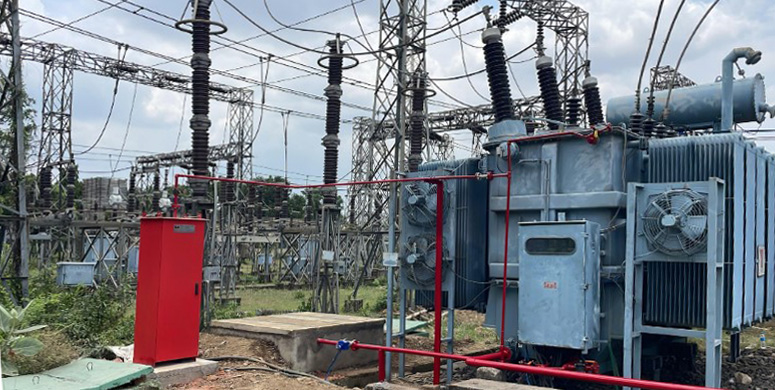The Nitrogen Injection Fire Protection System (NIFPS) prevents and extinguishes fires in oil-filled transformers. Thereby, it safeguards critical power infrastructure. We also commonly call it the Nitrogen Injection Fire Prevention & Extinguishing System (NIFPES). This system operates on a “drain and stir” principle, effectively mitigating fire hazards through a coordinated sequence of actions.
Working Principle of Nitrogen Injection Fire Protection System (NIFPS or NIFPES)
As it is a protection system, it first needs to detect situations for which it will act. So, an NIFPS or NIFPES must have full proof capability of detecting the actual abnormal conditions. Here, the abnormal condition means the fire hazard in a transformer. Although it also means the condition of the event that can bring a fire hazard in the transformer. This system prevents the probability of a fire hazard. Also, it extinguishes fire if it has already started.
Fault Detection by NIFPS
The system continuously monitors the transformer for internal faults. The system does it using protective relays. These relays are Differential, Buchholz, Pressure Relief Valve (PRV), or Rapid Pressure Rise Relay (RPRR). In simple and most common logic, we place an NO contact of the differential relay in series with a parallel combination of Buchholz trip and PRD relay NO contacts. Then we connect this combination to an NO contact master trip relay. Now, let us understand the logic step by step.
Suppose the differential relay operates. Due to this, the master trip relay isolates the transformer. Although here the Buchholz relay and PRD have not operated. That means the differential has operated without any major oil surge, hence the fault is not related to fire hazard. Again, suppose the differential operates. At the same time, either Buchholz or PRD, or both, have operated. But due to a defect in the system, the master trip does not operate. Although there may be a major fault, but still the NIFPS or NIFPES should not operate on a live transformer.
Fire Detection by Nitrogen Injection Fire Protection System
Heat or fire detectors strategically placed on the transformer detect external fires. Sometimes, there may be a fire hazard in a bushing for an external fault. For these faults, the differential relay does not operate. Therefore, it is unnecessary to include a differential relay contact here. Instead, we connect NO contact from all fire detectors in parallel. Then we connect that combination in series with a parallel combination of Buchholz trip and PRD trip relay contacts.
Then we connect this entire logic circuit to the master trip relay, NO contact. Upon detection of fire, and confirmation of Buchholz or PRD trip, also on isolation (circuit breakers tripped via master trip relay), the NIFPS becomes activated automatically.
Oil Draining
As soon as NIFPS acts, it triggers the quick-opening drain valve. Thereby, the drain valve releases a predetermined volume of hot oil from the transformer’s top layer. This reduces internal pressure. It is always good practice to drain oil from the upper portion of the tank. Because hot oil is always at the top. Also, if oil drains out from the bottom, it may face an obstruction in the drainage pipe due to the oil slug at the bottom of the oil.
Conservator Isolation
Simultaneously, the Transformer Conservator Isolation Valve (TCIV) closes to prevent oil flow from the conservator tank to the main tank, averting potential escalation of the fire. Also, if the flow of oil from the conservator is not stopped immediately, the drain volume and time will be unnecessarily increased.
Nitrogen Injection
NIFPS injects nitrogen gas under pressure into the bottom of the transformer tank. The nitrogen injection is always from the bottom part of the main tank. This is because, when the injected nitrogen comes up through the oil, it creates a stirring effect, cooling the oil and lowering its temperature below the ignition point. Also, nitrogen occupies the space created by the drained oil, forming an insulating layer that separates the oil from oxygen, thus preventing combustion.
Fire Extinguishing by Nitrogen Injection Fire Protection System (NIFPS or NIFPES)
External Fires: In cases of external fires, the system ensures rapid suppression, typically within 30 seconds, by spraying a water jet from all sides.

